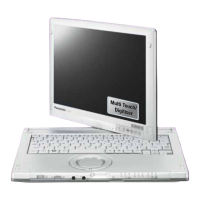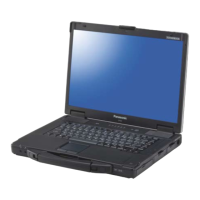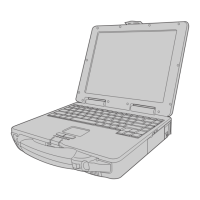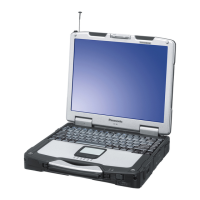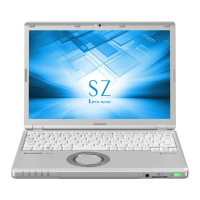99
External Display
Using Graphics Driver
1 Right-click the desktop, and click [Graphics Properties].
2 Click [Multiple Displays].
3 Select the display in [Operating Mode].
To display the image only on the internal LCD, select [Single Display] and select [Built-in Display] for [Primary
Display].
To display the same image on both the internal LCD and an external display, select [Clone Displays].
To display the image only on an external display, select [Single Display] and select [Monitor] for [Primary Display].
4 Click [Apply].
5 Click [OK].
6 If necessary, click [General Settings], set the color depth, resolution, etc., and click [OK].
Using the [Screen Resolution] screen
1 Right-click the desktop, and click [Screen Resolution].
2 Select the output destination at [Multiple displays].
To display the screen only on the internal LCD, select [Show desktop only on 1].
To display the same screen on the internal LCD and the external display, select [Duplicate these displays].
To activate the extended mode ( page 101), select [Extend these displays].
To display the screen only on the external display, select [Show desktop only on 2] (when “1” is assigned to the
internal LCD)
3 Click [Apply].
4 Click [Keep] if a confirmation screen is displayed.
NOTE
After resuming from sleep/ standby or hibernation, or restarting the computer, the output
destination may not be the same as the one selected in the previous status.
When you change the display after Windows starts up, do not press any key until switching is complete.
Display switching by pressing +
P
or
Fn
+
F3
/
Fn
+
F3
may not work when you use the
Fast User Switching function to switch the user. In this case, log off all users and restart the computer.
Do not connect or remove the external display during sleep / standby or hibernation.
Windows 7
Windows XP
Windows 7
Windows XP
Windows 7
Windows XP
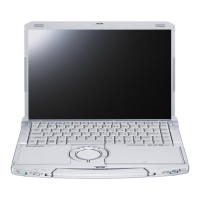
